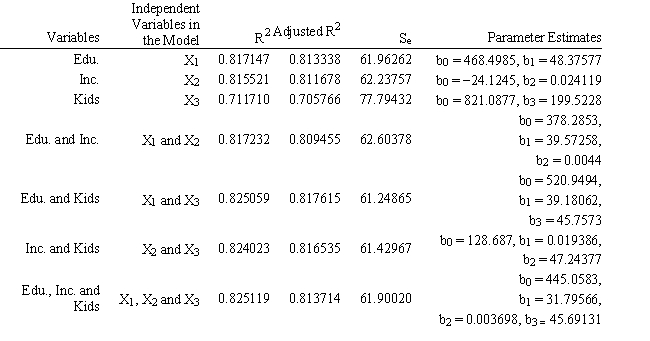Exhibit 9.4
The following questions are based on the problem description and spreadsheet below.
A charitable organization wants to determine what type of people donate to charities like itself. The charity felt that a person's education (in years), annual income, ($1,000) and the number of children the person had were important variables to consider. The charity developed regression models for all of the possible combinations of these three variables but does not know what to do with the results. 
-Refer to Exhibit 9.4. Based on the data in the table which is the best model for the charity to use? Explain which values you used to reach your conclusion.
Definitions:
Nonmanufacturing Cost
Expenses not directly involved in the production of goods, such as selling, administration, and other overhead costs.
Factory Overhead
All indirect costs associated with manufacturing, such as salaries of supervisors, maintenance, and utilities, not directly tied to the production of goods.
Direct Labor
The cost of wages for employees who directly manufacture products or provide services, considered a variable cost in production.
Direct Materials
Raw materials that can be directly attributed to the production of finished goods and are an integral part of the finished product.
Q2: The category of decision rules that contains
Q7: A simulation model was replicated 100 times
Q8: A binding less than or equal to
Q9: The error sum of squares term is
Q20: A cellular phone company wants to
Q23: Which of the following probability distributions are
Q24: The Simplex method uses which of the
Q45: Refer to Exhibit 14.12.What is the decision
Q45: A company needs to purchase several new
Q62: Binding constraints have<br>A)zero slack.<br>B)negative slack.<br>C)positive slack.<br>D)surplus resources.